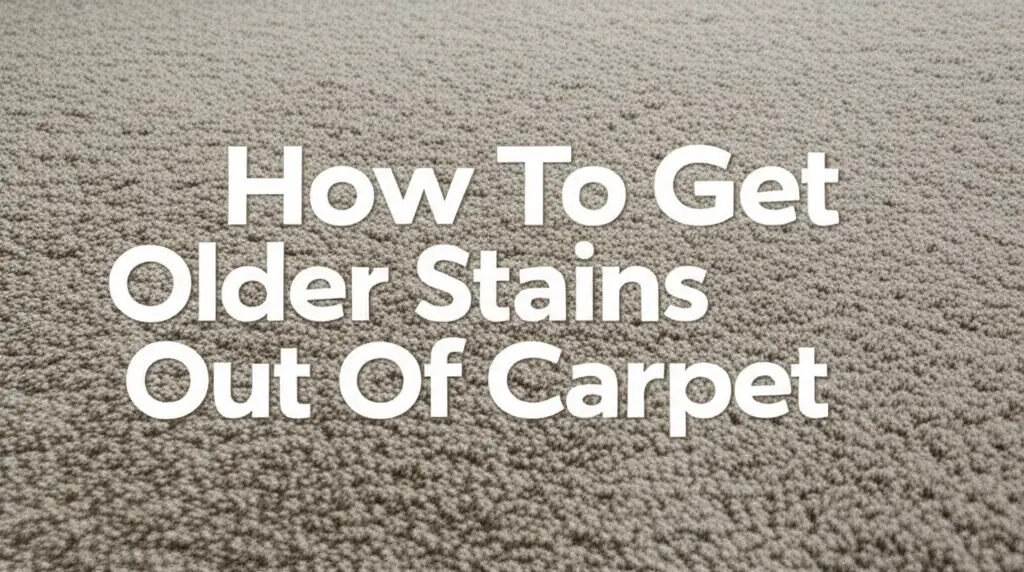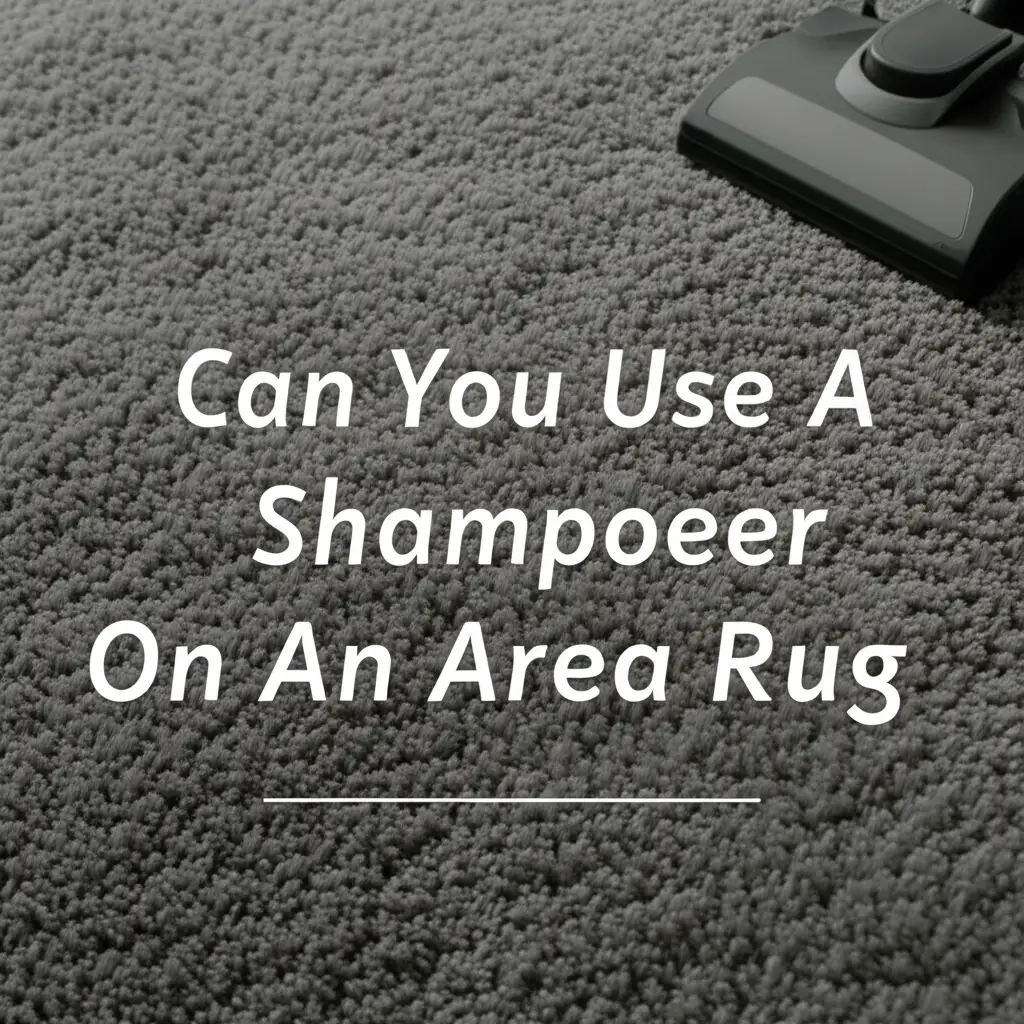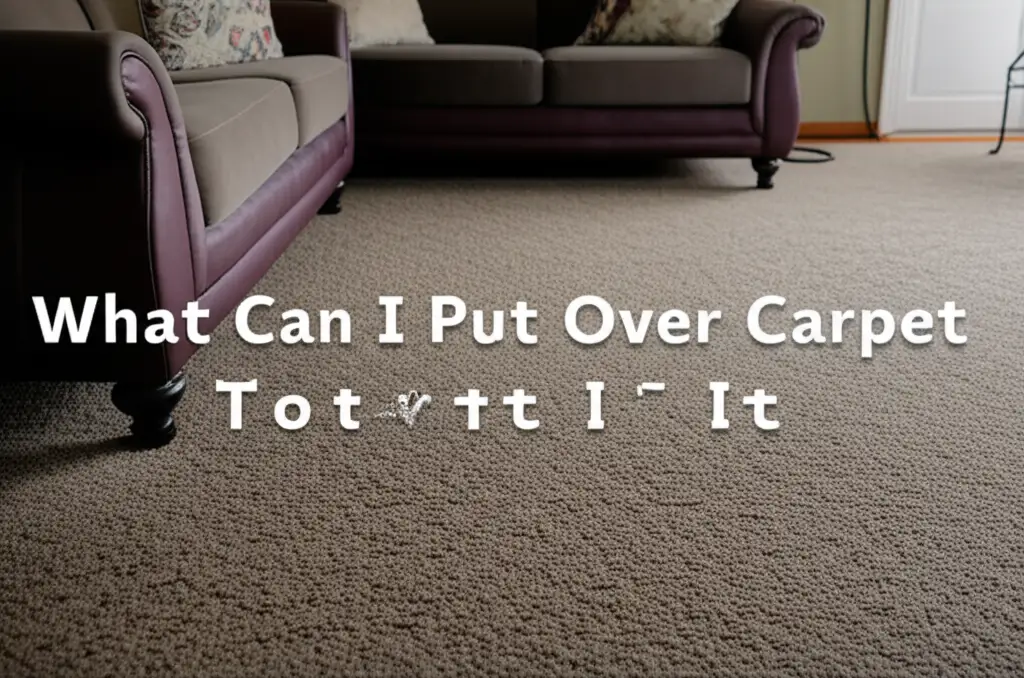· Elira Thomsen · Home Care · 15 min read
How To Get Older Stains Out Of Carpet

Reclaim Your Carpet: How To Get Older Stains Out Of Carpet
Carpets bring warmth and comfort to our homes. However, daily life often brings spills and accidents. A fresh spill is easy to clean. An older stain, though, presents a bigger challenge. These stubborn marks can feel permanent, embedding themselves deep into the carpet fibers. Yet, don’t despair! With the right approach and a bit of patience, you can effectively lighten or even completely remove these set-in imperfections.
This guide will walk you through the process. We will explore why old stains are so tricky. We will cover the essential tools you need. You will learn specific techniques for different types of old stains. We will also discuss advanced methods and when professional help is best. By the end, you will feel confident tackling those lasting marks. You will restore your carpet’s beauty.
Takeaway
Getting older stains out of carpet requires:
- Identifying the stain type and carpet material.
- Using appropriate cleaning agents and gentle techniques.
- Patience and repeated applications for stubborn marks.
- Considering professional cleaning for severe or delicate cases.
To get older stains out of carpet, first identify the stain type and carpet material. Then, use a mild cleaning solution, applying it gently and blotting, not rubbing. Repeat the process if needed, allowing the area to dry between attempts for best results.
Understanding Old Carpet Stains: Why They Stick Around
Old carpet stains are a common problem for many homeowners. They differ from fresh spills. A fresh spill sits on the surface of the carpet fibers. You can often blot it away quickly. Older stains, however, have had time to bond with the fibers. The liquid part of the spill evaporates. This leaves behind a concentrated residue. This residue dries and hardens. It becomes deeply embedded.
Various factors make old stains so stubborn. The type of substance matters a lot. Sugary drinks, for example, leave a sticky residue. This residue attracts dirt and grime. Over time, the stain grows darker. Protein-based stains, like blood or pet urine, can also be difficult. They chemically react with carpet dyes. This reaction often causes discoloration. The type of carpet fiber also plays a role. Synthetic fibers, like nylon, are generally more resistant to stains. Natural fibers, such as wool, are more absorbent. They hold onto stains more tightly.
Age is another significant factor. The longer a stain sits, the harder it is to remove. Heat can also set a stain. If you try to clean a fresh spill with hot water on certain stains, you might inadvertently set it. This makes the stain permanent. Regular foot traffic can also push the stain deeper into the carpet pile. This compacts the residue. Understanding these challenges helps you choose the right cleaning method. It also prepares you for the effort required.
Essential Tools and Solutions for Tackling Stubborn Stains
Before you begin tackling an older carpet stain, gather your supplies. Having everything ready makes the cleaning process more efficient. You will need basic tools and specific cleaning solutions. These items help you attack the stain effectively. They also protect your carpet from damage.
First, you need absorbent materials. White paper towels or clean white cloths work best. Their white color prevents dye transfer to your carpet. You will use these for blotting the stain. A sturdy scrubbing brush, or even an old toothbrush, can help. These tools work to agitate the stain. They lift it from the fibers. Always use a soft-bristle brush. This prevents damage to your carpet.
Next, consider your cleaning solutions. Common household items often work well. White vinegar is a versatile cleaner. It helps break down many organic stains. Baking soda is another great option. It absorbs odors and can lift fresh moisture. Dish soap, especially a mild, clear one, can act as a degreaser. For more stubborn stains, you might need stronger options. Enzymatic cleaners are excellent for pet stains. They break down organic matter. Hydrogen peroxide can brighten light-colored carpets. Always test any solution in an inconspicuous area first. This step ensures it does not harm your carpet’s color or texture. For professional-grade solutions, consider renting a carpet cleaner. You can find information on where to get one here: Where Can I Get A Carpet Cleaner Rental.
You might also need a spray bottle. This helps apply solutions evenly. A small bucket for rinsing cloths is useful. Gloves protect your hands from chemicals. Finally, a fan or open windows aid drying. Proper drying prevents mildew. Having these supplies prepared will set you up for success.
Step-by-Step Methods for Common Older Stains
Removing older stains requires a systematic approach. The method often depends on the type of stain. Different substances react to different cleaners. Always start with the least aggressive method. This minimizes potential damage to your carpet. Before treating any stain, remove loose debris. Use a dull knife or spoon. Vacuum the area thoroughly. This prepares the spot for cleaning. Remember to always blot, never rub. Rubbing spreads the stain and damages carpet fibers.
Organic Stains (Coffee, Wine, Food)
Organic stains are common in homes. Coffee and wine stains can be especially visible. For these, a mixture of white vinegar, water, and mild dish soap often works wonders. First, mix one part white vinegar with two parts water. Add a few drops of clear dish soap. Spray this solution onto the stain. Let it sit for 5-10 minutes. Then, blot the area with a clean, white cloth. Repeat until the stain fades.
Food stains, like sauces or chocolate, may need a slightly different approach. If the stain has dried, gently scrape off any crusted material. Then, apply the same vinegar solution. For oily food stains, sprinkle baking soda on the area first. Let it sit for 15-30 minutes. This helps absorb the oil. Vacuum the baking soda. Then proceed with the vinegar solution. Always finish by rinsing the area with clean water. Blot dry thoroughly. If you are cleaning a machine-made carpet, understanding general cleaning methods can be beneficial: How To Clean A Machine Made Carpet Cleaning.
Protein-Based Stains (Pet Accidents, Blood)
Protein-based stains require specific enzymatic cleaners. These cleaners break down the proteins. This neutralizes odors and removes the stain effectively. Pet accidents are a prime example. They can leave lasting odors and stains if not treated quickly. For pet stains, blot up as much liquid as possible first. Then, saturate the stain with an enzymatic cleaner. Follow the product instructions carefully. Often, you need to let it sit for several hours. Cover it with plastic wrap to keep it moist. After the waiting period, blot dry. You can find more specific advice on cleaning pet stains here: How To Clean Carpet Stains Pets.
Blood stains also contain protein. Fresh blood is easier to remove. For older blood stains, use cold water. Hot water can set blood stains permanently. Mix a small amount of laundry detergent with cold water. Apply this solution to the stain. Blot gently from the outside in. Hydrogen peroxide can also be effective for blood stains on light-colored carpets. Apply it sparingly. Let it fizz for a few minutes. Then blot. Rinse thoroughly with clean water. Blot until dry.
Oil and Grease Stains
Oil and grease stains are notoriously difficult. They repel water. This makes them hard to remove with water-based cleaners alone. For old oil or grease stains, start by sprinkling an absorbent powder. Cornstarch, baking soda, or talcum powder work well. Cover the stain generously. Let it sit for several hours, or even overnight. The powder will absorb some of the oil. Vacuum up the powder thoroughly.
After absorbing the oil, you need a degreasing agent. A small amount of clear dish soap mixed with warm water can work. Apply the soapy water to a clean cloth. Blot the stain repeatedly. Do not over-wet the area. You can also use a dry-cleaning solvent specifically for carpets. Always test solvents in an hidden area first. This prevents damage to your carpet. For very stubborn grease, rubbing alcohol can also be effective. Apply it to a cloth, then blot. Always rinse the area well with clean water and blot dry. If you encounter specific tough stains like cheese, the principles for oil and grease can often apply: How To Clean Cheese Out Of Carpet.
Advanced Techniques for Deep-Set Carpet Stains
Sometimes, standard methods are not enough for older, deep-set stains. These stains have truly bonded with the carpet fibers. They may require more powerful tools and specialized solutions. Using advanced techniques can often save your carpet from permanent damage. These methods bring professional cleaning power into your home.
One effective advanced technique is steam cleaning. A carpet steamer or hot water extractor can work wonders. These machines inject hot water and cleaning solution into the carpet. They then powerfuly extract the dirty water. The heat helps to loosen the stain. The extraction removes the residue. Steaming can reactivate dried stains. This makes them easier to lift. You can rent a steam cleaner from many home improvement stores. Always follow the machine’s instructions. Make sure your carpet type is suitable for steam cleaning. If you’re wondering, Does Steaming A Carpet Clean It? The answer is often yes, especially for deep cleaning.
Another option is to use dedicated professional-grade carpet stain removers. These products often contain strong solvents or advanced cleaning agents. They target specific types of tough stains. Look for products designed for “set-in stains” or “old stains.” Always read the label instructions carefully. Proper ventilation is crucial when using stronger chemicals. Test the product on an inconspicuous area first. This prevents discoloration or damage to your carpet. Some stains, like theraputty, require specific approaches, so knowing about specialized cleaners is important: How To Get Theraputty Out Of Carpet.
For stains that have left a shadow or discoloration, hydrogen peroxide can be a last resort. Use it very cautiously, especially on darker carpets. It acts as a mild bleaching agent. Mix one part hydrogen peroxide (3%) with five parts water. Apply it to a white cloth. Gently blot the discolored area. Do not saturate the carpet. Let it sit for a few minutes. Then, blot with a clean, damp cloth. Repeat as needed. Always ensure you rinse and dry the area thoroughly after using any strong solution to prevent residue buildup.
When to Call a Professional Carpet Cleaner for Old Stains
While DIY methods can be effective, there are times when a professional carpet cleaner is your best option. Older stains, especially, can be very stubborn. Knowing when to call in the experts can save you time, effort, and potentially prevent further damage to your carpet. Professionals have specialized knowledge and equipment that homeowners often lack.
Consider calling a professional when DIY attempts fail. If you have tried several methods and the stain remains, it might be too deeply set for home treatment. Professionals use industrial-grade equipment. These include powerful hot water extractors and specialized cleaning solutions. These machines generate more heat and suction than rental units. This allows for a deeper clean. They can penetrate deep into the carpet pile. This lifts out even the most stubborn residues.
Another reason to hire a professional is for delicate carpet materials. Natural fibers like wool, silk, or antique carpets require expert care. Incorrect cleaning solutions or methods can cause irreversible damage. This includes shrinking, discoloration, or fiber distortion. Professionals understand different carpet types. They know the safest and most effective cleaning agents for each. They can assess your carpet’s specific needs. This prevents costly mistakes. You can even explore options like Can You Dry Clean A Carpet for delicate materials, a service often provided by professionals.
Finally, very large or multiple old stains warrant professional attention. Cleaning a large area by hand is labor-intensive. It might not yield consistent results. Professionals can clean entire rooms efficiently. They restore uniform cleanliness. They also ensure proper drying. This prevents mold and mildew growth. Investing in professional cleaning can extend your carpet’s lifespan. It keeps your home looking its best. If you’re looking for professional services, you might want to learn How To Get Business Carpet Cleaner in your area. They often offer residential services too.
Preventing Future Older Stains and Maintaining Your Carpet
Removing old stains is challenging. Preventing them is much easier. Proactive steps keep your carpet looking fresh. They reduce the need for intensive cleaning down the line. A few simple habits make a big difference. These habits extend your carpet’s life. They also maintain its appearance.
The first step is immediate action. Always address spills as soon as they happen. The longer a spill sits, the deeper it penetrates. Fresh spills are almost always easier to remove than old ones. Keep a stain removal kit handy. This kit should include white cloths, a mild detergent, and a spray bottle. This readiness encourages quick response. Blot spills immediately with a clean, dry cloth. Work from the outside of the spill inward. This prevents spreading.
Regular vacuuming is also crucial. It removes dirt and debris. These particles can get ground into the carpet. They contribute to stain formation over time. Vacuum at least once a week. High-traffic areas may need more frequent vacuuming. Regular vacuuming also picks up loose fibers. It keeps the carpet pile standing tall. This makes it harder for stains to settle deeply.
Consider using carpet protectors. These products create an invisible barrier on the carpet fibers. This barrier repels liquids and prevents stains from soaking in quickly. Most new carpets come with some form of stain protection. This protection wears off over time. You can reapply it periodically. Products like Scotchgard are widely available. Always test them on an inconspicuous area first. Also, consider placing rugs or mats in high-traffic areas. Entryways, hallways, and in front of sofas benefit from these. They act as a barrier. They catch dirt and spills before they reach your main carpet. You can learn more about protecting your carpet here: What Can I Put Over Carpet To Protect It.
Finally, schedule professional carpet cleanings periodically. Even with regular maintenance, carpets accumulate dirt and allergens. Professional cleaning every 12-18 months removes deep-seated grime. It rejuvenates the carpet fibers. This proactive approach helps prevent stains from becoming permanent. It keeps your carpet looking its best for years.
FAQ Section
Can baking soda remove old stains from carpet?
Baking soda can help with certain older stains, especially those with odors or greasy residues. It acts as an absorbent. Sprinkle it generously over the stain. Let it sit for several hours or overnight to absorb moisture and odors. Then, vacuum it up. For deeper stains, you might need to follow up with a liquid cleaner after using baking soda.
What is the best homemade solution for old carpet stains?
A common and effective homemade solution involves white vinegar, water, and mild dish soap. Mix one part white vinegar with two parts warm water and a few drops of clear dish soap. Apply the solution to the stain with a spray bottle. Let it sit for a few minutes, then blot with a clean cloth. This solution works well for many organic and protein-based stains.
Will hydrogen peroxide ruin carpet?
Hydrogen peroxide (3%) can be safe for most light-colored synthetic carpets. It acts as a mild bleaching agent. Always dilute it (e.g., one part peroxide to five parts water) and test it on an inconspicuous area first. Do not use it on dark-colored carpets or natural fibers like wool, as it can cause discoloration or damage. Blot, do not saturate.
How long does it take for a carpet stain to set permanently?
A carpet stain can start to set within a few hours, but it truly becomes “older” or “set-in” after 24-48 hours. The longer a stain remains, the more it dries and bonds with the carpet fibers. This makes it significantly harder to remove. Heat or certain chemical reactions can also accelerate the setting process, making it permanent much faster.
Is professional carpet cleaning worth it for old stains?
Yes, professional carpet cleaning is often worth it for old and stubborn stains. Professionals have powerful equipment and specialized solutions that penetrate deeper than home methods. They can remove residues that DIY attempts leave behind. They also handle delicate carpet types safely. This can save you from replacing your carpet.
Can old pet stains be removed completely?
Yes, old pet stains can often be removed completely, including odors. However, they are challenging due to the proteins and chemicals in pet urine that can react with carpet dyes and padding. Enzymatic cleaners are crucial. They break down the organic matter causing the stain and odor. Multiple applications or professional treatment may be necessary for full removal.
Conclusion
Getting older stains out of carpet can seem like a daunting task. These stubborn marks often feel permanent. Yet, with patience, the right tools, and proper techniques, you can effectively tackle them. We have explored why old stains are so challenging. They bond deeply with carpet fibers over time. We covered essential supplies, from absorbent cloths to specialized cleaners. You learned specific methods for common stains like coffee, pet accidents, and grease. Remember to always test solutions and blot gently.
Advanced techniques, such as steam cleaning and professional-grade removers, offer more power for deep-set marks. Sometimes, despite your best efforts, the stain persists. This is when professional carpet cleaners become invaluable. Their expertise and equipment can often achieve what DIY methods cannot. Finally, we emphasized the importance of prevention. Prompt spill treatment, regular vacuuming, and protective measures can significantly reduce the occurrence of future old stains. By following these guidelines, you can keep your carpets looking fresh and extend their lifespan. Do not let old stains detract from your home’s comfort. Take action and restore your carpet’s beauty today.





